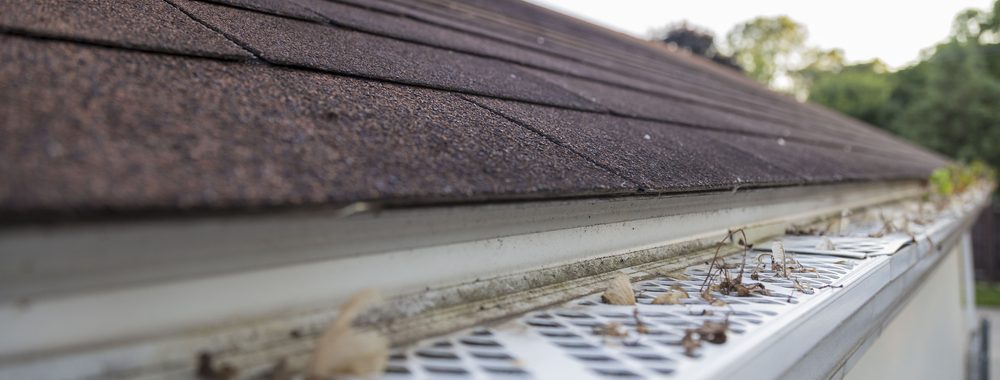Wintertime brings around the holidays, cozy fires, as well as snow and ice that can lead to problems for homeowners. Winter weather, especially the amount of snow that we get in northern Illinois, brings about snow build-up that can lead to dreaded ice dam.
What is an Ice Dam?
Ice dams form on your roof as heat escapes from your home, melting the snow, causing the snow to run down your roof to a spot where the roof is no longer warm – and the ice reheats. As this happens, an ice dam forms and grows as more snow melts and freezes again. It turns problematic when the ice becomes too heavy and finds its way under loose shingles and into your home. Once in your home, it may cause water damage, mold issues or larger structural problems in the home.
Many people believe that snow gathers along the edge of your gutter guards, causing ice dams to ultimately form on your roof. This is not the case.
The Problem With Gutters
While gutter guards are not the cause of ice dams, that doesn’t mean they don’t play a part in the formation. If your gutters are clogged with leaves and other debris when winter starts, melting snow cannot make its way off of the roof and onto the ground as it should. This water will then freeze, helping an ice dam to form.
Clogged gutters may cause larger ice dams, but are not the reason that they form in the first place.
If you find that your gutter dams are breaking against the weight of snow and ice, it may be time to install a different type of guard such as micro-screen aluminum which can be easily raked off and snow removed quickly. Collapsed gutter guards can lead to blockage, which can ultimately lead to ice dams and expensive home repairs.
How to Handle Ice Dams
The best way to take care of ice dams is to prevent them before they start. Preventing ice dams starts by making sure your attic is properly insulated and that your home is ventilated.
- Bring in a professional roofing company to check that your home is ventilated.
- Clear all gutters and keep them clean and clear of debris.
- Ductwork in the attic must be well insulated and sealed to prevent any leaks.
- Any warm air leaks must be sealed to prevent them from heating the roof, causing melting snow.
- Clear away any piles of snow that appear on your roof. Use a roof rake to prevent tearing any shingles.
- Melt the ice dam by using a pair of pantyhose filled with calcium chloride ice melter. Lay it across the ice dam and gutter. The ice will melt quickly, creating a passage for water to drip through.
If ice dams do form, melt the ice dam by using a pair of pantyhose filled with calcium chloride ice melter. Lay it across the ice dam and gutter. The ice will melt quickly, creating a passage for water to drip through.
If water damage has become a problem due to ice dams forming on your home, it’s time to bring in the water damage restoration specialists at McMahon Services. Our team has handled water damage restoration for over 20 years and is certified in clean-up services.
Contact us for more information on how we can assist your Chicago area home with water damage today.








0 Comments